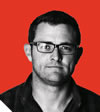Marnitz Boshoff kicked 50 points in his first two Super Rugby matches for the Lions.
Against all expectations, the Lions beat the Cheetahs in Bloemfontein in the opening game of the Super Rugby season. It marked a terrific return to the elite level, and there’s no doubt they would not have won if not for Marnitz Boshoff, the man who kicked all 21 of their points, including the last-minute drop goal that clinched the game.
‘There were a couple of things going through my mind at that point,’ Boshoff says. ‘We’d played a few phases and were unable to break the Cheetahs’ defence, so I thought a drop goal was a perfect way to get some points. I left it up to the last minute, so as I got the ball I thought, “This is it. If I kick it, we win, if I miss, we might lose.” But as I struck the ball, I knew it was going over.’
Boshoff produced another flawless kicking display a week later in the Lions’ 34-10 thrashing of the Stormers at Ellis Park, with six penalties, three drop goals (the second of which was from 50m out) and a conversion giving him a 29-point haul.
How did a Hoërskool Nelspruit pupil end up at the Lions?
Boshoff played for the Pumas at the U13 and U18 Craven Weeks and was selected for SA Schools ahead of Sias Ebersohn. He went on to play U19 and U21 rugby for the Blue Bulls in 2008 and represented Tuks in the 2009 and 2010 Varsity Cup tournaments. After playing Vodacom Cup and Currie Cup rugby for the Blue Bulls in 2011, Boshoff spent the following year at Griquas before signing for the Lions and making an immediate contribution.
With Elton Jantjies on loan at the Stormers, Boshoff wore the No 10 jersey during the Lions’ friendlies. His reliability with the boot became evident when he scored 27 points in the Vodacom Cup final against the Pumas. Jantjies’ return to the Lions for the Currie Cup resulted in Boshoff being moved to fullback, and he finished the season as the Lions’ top point-scorer with 92.
Boshoff’s accuracy off the kicking tee and his ability to remain calm under pressure were evident in the opening match of this year’s competition. His performance on debut was subsequently praised by Nick Mallett.
‘I thought this guy was a fullback, but he was impressive at flyhalf this evening. He surprised me,’ said the former Springbok coach.
Another who speaks highly of Boshoff is Lions backline coach Swys de Bruin.
‘Marnitz has that typical flyhalf’s ability to read the game very well. He is a good option at either 10 or 15 for us.’
Boshoff attributes his calmness under pressure to his pre-match ritual of listening to music.
‘Most of the time I listen to something relaxing to keep my mind clear and focused on the game,’ he reveals.
Boshoff must maintain this level of performance if the Lions are to achieve further success in their Super Rugby comeback.
‘I just want to be consistent, week in and week out, and the rest will sort itself out,’ he says.
Boshoff has played the bulk of his rugby at flyhalf, and knows the role very well.
‘I have always played at No 10, although I had a season at the Bulls where I played 15 in my U20 year and also for the Lions in last year’s Currie Cup.’
While it’s too early to talk of Boshoff as a Springbok contender, his performance with the boot in the Lion’s first two Super Rugby games this year would have caught a lot of people’s attention.
‘It is my goal to play for the Springboks one day, but I don’t want to think too far ahead. These things will fall into place by themselves,’ he says.
Rugby is something that has always been in the Boshoff family. Marnitz’s two older brothers, Ruan and Chandré, both played professional rugby for the Bulls, before Ruan moved on to the Lions.
Though Boshoff may not boast a side-step like Benji Marshall, his accuracy with the boot and strong decision-making should be acknowledged as valuable assets.
Boshoff’s game time at flyhalf this season will, of course, depend on the form and availability of Jantjies, but Lions coach Johan Ackermann will be mindful of what was achieved in those first two games, and what Boshoff can offer.
– This article first appeared in the April 2014 issue of SA Rugby magazine




